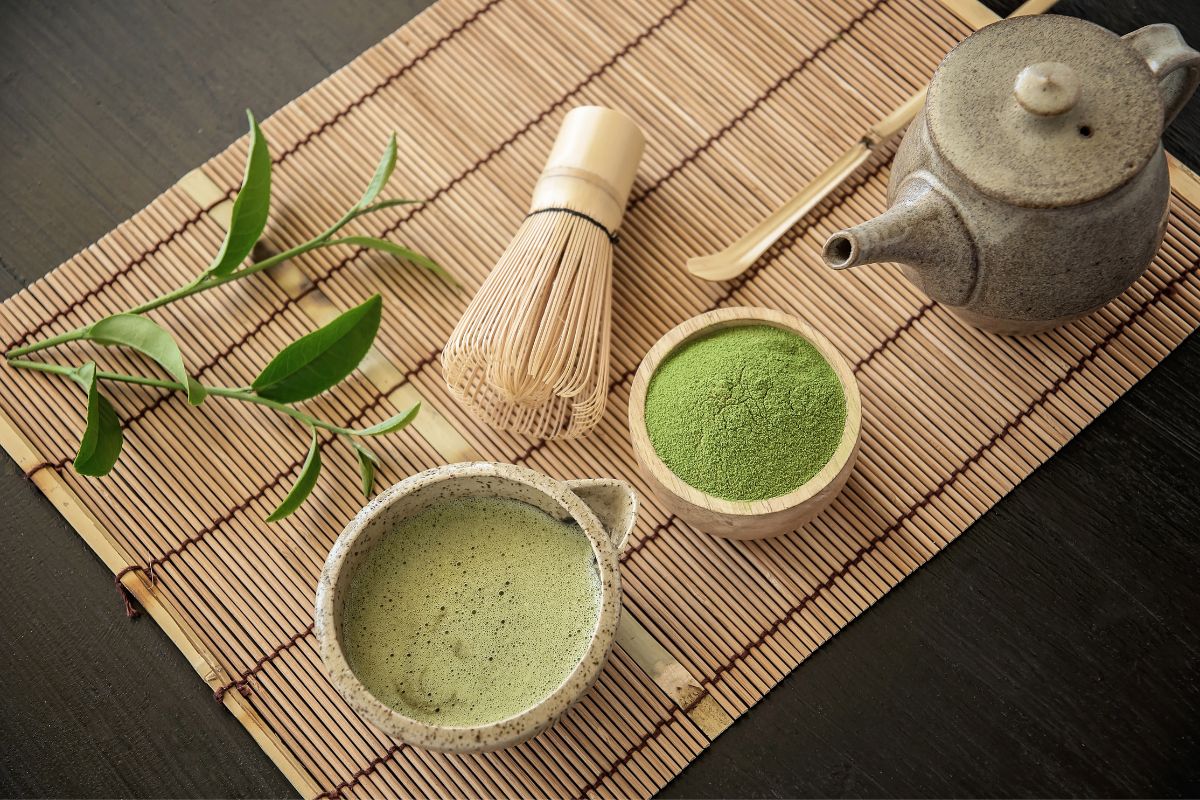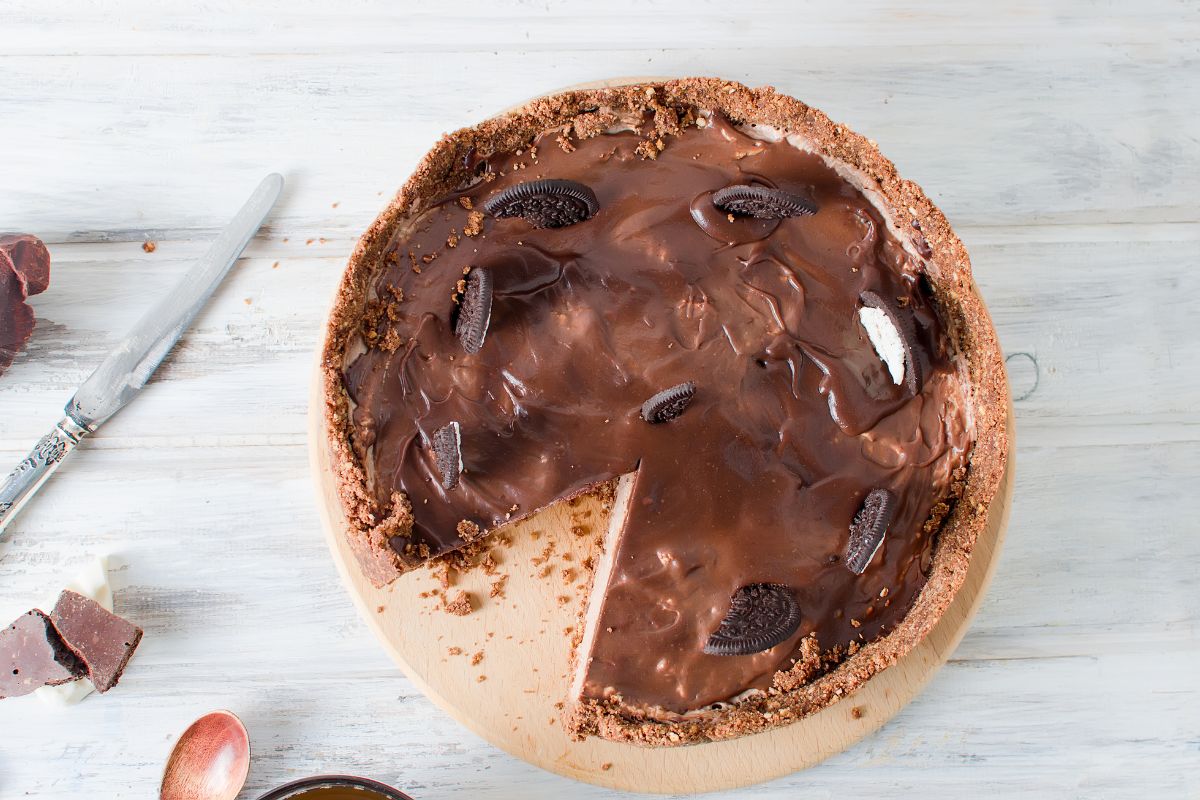Matcha is known for its bright green, Instagram-worthy color and – supposedly – a myriad of health benefits.
While it might seem like a fairly recent fad, matcha actually dates back nearly a thousand years during the dynasty rule in China. It has since been a huge part of Chinese and Japanese culture before recently moving to the West.

While it is served in coffee shops, matcha is actually a type of green tea. People who drink matcha regularly will boast about its countless health benefits, but surely something bright green isn’t going to taste good, right?
So, if you’re wondering “what does matcha taste like?”, you’ve come to the right place. Here is everything you need to know about matcha, including what it tastes like and what it actually is!
What Is Matcha?
Before we describe what matcha tastes like, let’s take a look at what matcha actually is.
Matcha is a type of green tea, but not like regular bags of green tea that just require steeping and brewing. Matcha is a bright green powder of stone-ground whole green tea leaves.
These leaves are picked three weeks before harvest, and shaded for a slower growth. Slowing the growth boosts the chlorophyll, which gives these leaves a greener color.
Not only this, but shading the leaves increases theanine. Theanine is an amino acid that is responsible for causing relaxation without sleepiness.
The powdered green tea leaves are whisked into hot water to create a frothy drink. In most cases, coffee shops will offer matcha in the form of matcha lattes.
This is the same as a regular latte, just with the whisked matcha rather than an espresso shot.
What Does Matcha Taste Like?
Matcha, as the green color suggests, has a distinctly earthy flavor. It is often described as grassy, but with notes of sweetness, nuttiness, and a pleasant bitterness.
It’s certainly an acquired taste and one that might take some getting used to.
The flavor of matcha will depend on how you prepare it. Traditionally, matcha is served in its rawest form, with the powder whisked into hot water. It is sipped slowly and tastes more earthy.
It’s strong and might be deemed unpleasant by those not used to the vegetal flavor.
Matcha lattes, however, are basically a diluted version of traditional matcha. The matcha powder is whisked into hot water, and then added to a glass of frothy, warm milk.
The milk serves to elongate the drink, while also making it taste creamier and less earthy.
Most people who are getting used to matcha drinks will ask for a sweetener to make the taste more pleasant. The sweetener can include agave, honey, sugar, vanilla syrup, or other syrup types.
There are also different flavors of matcha that have been created to mask the earthy flavors of the green tea. These are particularly popular in Western coffee shops.
What Are The Health Benefits Of Matcha?
Matcha is packed with antioxidants, nutrients, and anti-inflammatory properties.
As a result of its high antioxidant content, matcha is consumed to help the immune system, stimulate metabolism, prevent diseases, reduce skin inflammation, and more.
One of the main benefits of matcha, however, is its ability to make the consumer relaxed while alert. It has a high theanine content, which provides the same boost as caffeine without the shakes and anxiety.
Instead, matcha works to calm the consumer while keeping them awake and alert.
Does Matcha Contain Caffeine?
Yes, matcha contains some caffeine. You won’t notice this, because the leaf is ground into powder, but matcha contains an entire green tea leaf. As a result, its caffeine content is much higher than regular brewed green tea.
It is estimated that matcha contains about 60 mg of caffeine per serving. This is roughly ⅔ of the caffeine content in a cup of coffee, making matcha more comparable to a black tea.
Because the caffeine content is lower than coffee, matcha provides all the awakening benefits of coffee without the shakes and crash. Instead, the consumer is left with a feeling of alertness without the negative side effects of coffee.
This is why people will typically drink matcha in the morning, as it won’t make you crash later in the day.

Why Don’t I Like Matcha?
Not everybody is a fan of matcha. It’s certainly an acquired taste that might take some getting used to. Still, if you want to like matcha but you can’t stand the taste, there’s a chance you might not be trying good matcha.
Some cheaper matcha brands will disguise themselves as matcha, when in reality, it’s just powdered regular green tea leaves. This results in a weaker taste, and it won’t provide you with the benefits of real matcha.
Real matcha is made of green tea leaves that have been shaded for the last three weeks before harvest, as explained earlier.
If you’ve only ever tried traditional matcha, you might want to consider a matcha latte. Adding frothy milk makes the matcha significantly less earthy and more comforting.
You can also add a sweetener of your choice to mask the grassy flavor.
Not only this, but matcha powders come in a variety of different flavors nowadays. These flavors aren’t traditional in the slightest, but they are delicious.
These flavors include banana, vanilla, salted caramel, lemon, turmeric, and more. You might have to search for these flavors online or in a specialist tea store.
The key to finding the right matcha is to look for the color. Real organic matcha is bright green, and the general rule is that the greener the matcha, the higher the quality.
If the matcha is slightly brown, it means the leaves weren’t shaded properly, which impacts the flavor and health benefits.
Also, make sure to only choose matcha that is contained in airtight packaging. Matcha will oxidize, impacting its flavor and optimum results.
Summary
So, there you have it! Matcha is certainly an acquired taste, but if you enjoy the earthy tones and grassy flavor, you’ll struggle to go a day without this tasty drink.
- How To Reheat A Cheesesteak - November 5, 2023
- What Are Three Must Have Kitchen Knives? - September 22, 2023
- How To Protect Edges Of Pie Crust - June 15, 2023








